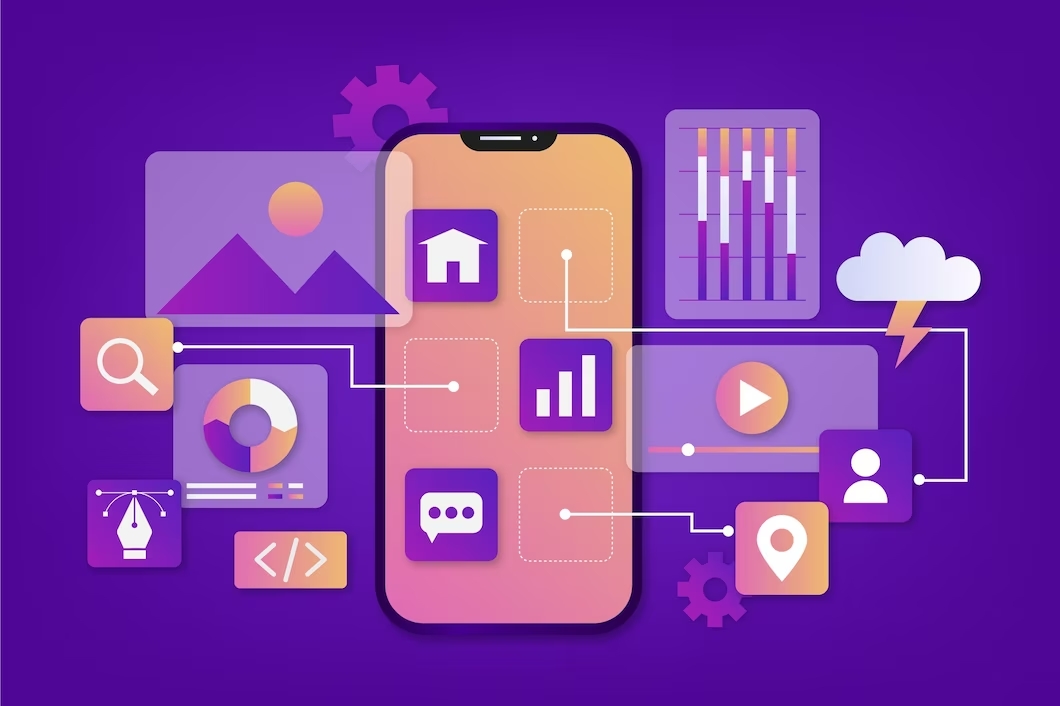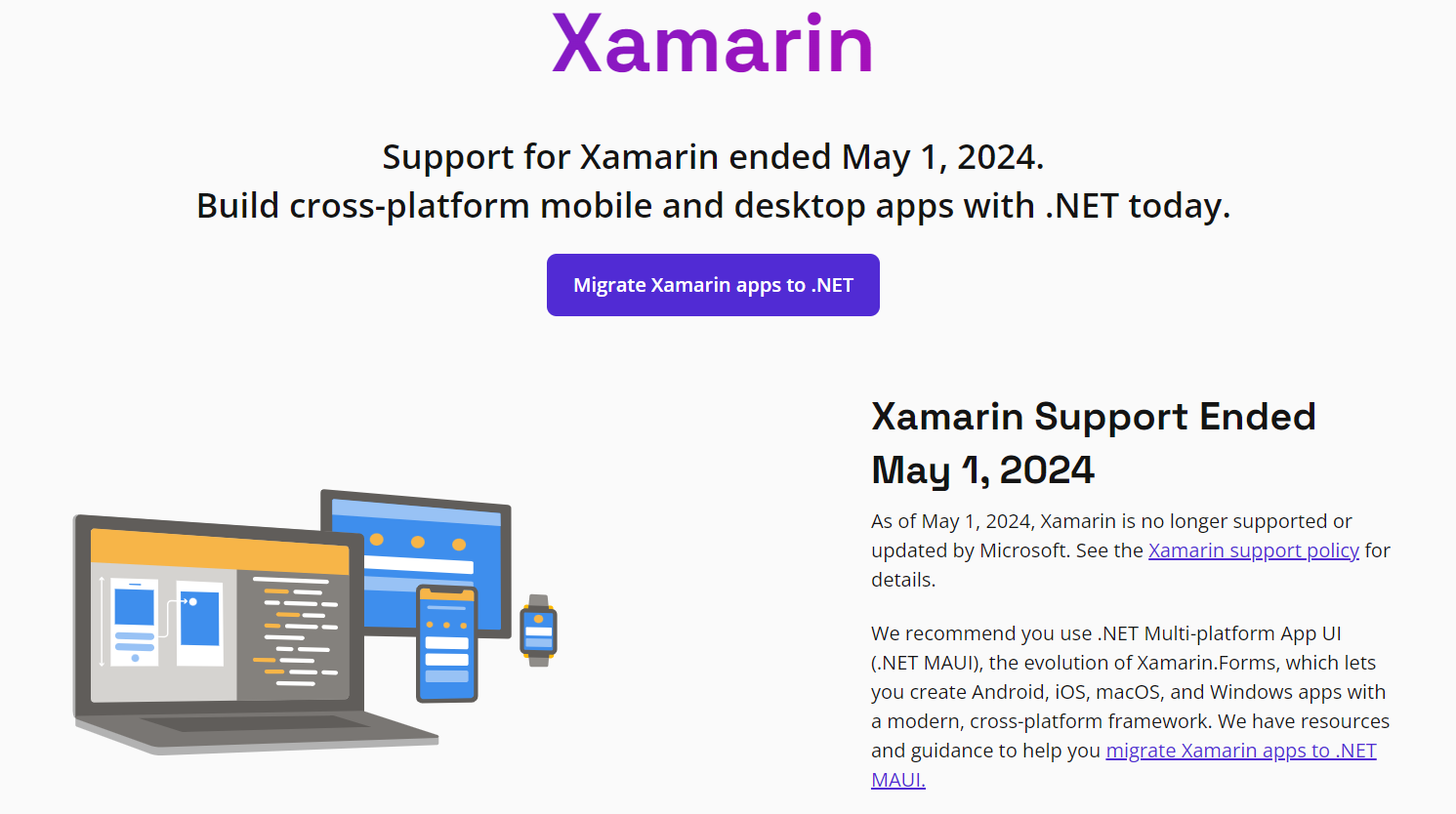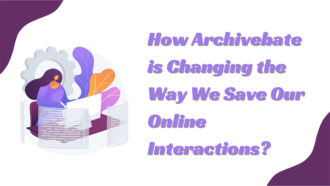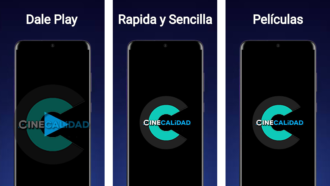Mastering B2B App Development: A Comprehensive Guide
- 1 What Is a Business-to-Business App?
- 2 How To Create A Business-To-Business App
- 3 Select a Reliable App Development Company
- 4 Choose the Most Effective Mobile App Development Framework
- 4.1 1. React Native
- 4.1.1 Pros:
- 4.1.2 Cons:
- 4.1.3 Ideal For:
- 4.2 2. Flutter
- 4.2.1 Pros:
- 4.2.2 Cons:
- 4.2.3 Ideal For:
- 4.3 3. Xamarin
- 4.3.1 Pros:
- 4.3.2 Cons:
- 4.3.3 Ideal For:
- 4.4 4. Ionic
- 4.4.1 Pros:
- 4.4.2 Cons:
- 4.4.3 Ideal For:
- 5 B2B App Development Costs
- 6 Essential Conditions For Creating A Successful B2B App:
- 7 Conclusion
Most apps accessible in app stores are designed for diverse users. However, the need for B2B applications (apps that appeal to businesses and business consumers) is growing. In this article, we will examine all the aspects of B2B app development and explain why companies must succeed.
Making a B2B app is a great opportunity, whether you already have a firm that sells to other businesses or are an entrepreneur looking to create a B2B business strategy.
This article will teach you everything you need to learn about B2B apps, including their primary functions, features, and benefits. There are also significant distinctions between mobile B2C and B2B applications.
What Is a Business-to-Business App?
It all comes down to linking businesses. A business-to-business (B2B) app connects one company with another business partner, entrepreneur, stakeholder, etc. While some B2B apps are available to everyone, some are only available to businesses. Several B2B apps streamline company procedures or address industry-specific demands.
They boost operational efficiency and make life easier for business users and long-term organizational objectives in practically all situations. It is vital to understand that there are different sorts and variations of B2B apps.
Google Analytics Asana, LinkedIn Pulse, and the Salesforce Mobile App are popular B2B apps that address customer concerns or enterprise challenges. However, it is also possible to create B2B e-commerce systems that are only available to wholesale customers. You can also construct independent apps for internal corporate functions like workflow automation or employee communication. A B2B app was created with businesses or business users in mind rather than consumers in general.
How To Create A Business-To-Business App
Select the B2B Application Type
Before launching a business-to-business app, you must thoroughly understand your company’s objectives and know everything necessary for your firm to succeed.
After reviewing your requirements, you must select an appropriate B2B mobile app.
- Commercial Apps: B2B e-commerce apps that only offer products or services. Most commercial applications include a price system and encourage users to purchase through the app to speed up the transaction process.
- External management includes CRM, project management solutions, and online video conferencing programs. Jira is a B2B external management tool that helps enterprises with project management, task tracking, and assignment management, among other things. You can connect your internal team with vendors or clients to assign tasks and track project progress in real-time.
- Internal operations: This application can automate your company’s processes, from marketing blogs to payroll and project management. Slack is a popular internal operations software that helps organizations streamline their internal processes.
- Applications for simplifying work That your company’s field workers, human resource managers, and other personnel use. For example, you can contact your delivery managers to learn more about your deliveries. Similarly, your HR managers may keep track of any data about employees or new hires. Microsoft and Google are two well-known examples of work simplifying B2B commercial software.
Select a Reliable App Development Company
After you know your business goals, employing a reputed app development firm is the next critical step in establishing a successful B2B business app. It might be a challenging decision because many outstanding app development businesses exist. The good news is that you can choose between a large, well-established corporation and a small start-up.
You can locate a reputable app development business that is small enough to provide you with the individual attention you desire while also being large enough to supply you with the experience and service you require.
You can think about Star Knowledge for your B2B app development. As a mobile app development business, we design unique, functional, and feature-rich apps. We work with your organization to make your ideas a reality at an affordable price.
Choose the Most Effective Mobile App Development Framework
App development frameworks considerably improve the functionality of your B2B mobile app. A framework that provides structure and support can build a successful mobile app. However, most businesses may need help choosing the best one.
Flutter App Development, a cross-platform framework that facilitates the production of highly immersive mobile app designs that emphasize user interaction through an interactive prototype, is the best option. It is also the most cost-effective solution for B2B mobile application development. Another good option is an open source b2b ecommerce platform, which can give you the most flexibility and scalability
1. React Native
React Native, developed by Facebook, is a popular open-source framework for building cross-platform mobile apps using JavaScript and React. It allows developers to create applications for both iOS and Android using a single codebase.
Pros:
- Cross-Platform Development: Write once, run anywhere. React Native enables code reuse between iOS and Android, saving time and resources.
- Hot Reloading: Allows developers to see changes in real time without rebuilding the app, improving productivity.
- Large Community and Ecosystem: A vast community and a rich ecosystem of libraries and plugins facilitate faster development and problem-solving.
- Performance: Near-native performance due to the use of native components.
Cons:
- Complex UI and Animations: This may require native code for highly complex user interfaces and animations, increasing development complexity.
- Third-Party Libraries: Dependence on third-party libraries can sometimes lead to compatibility issues or lack of support.
- Performance: While generally good, performance may not match fully native applications, especially for highly demanding apps.
Ideal For:
- Businesses need apps for both iOS and Android with a moderate-to-high degree of code sharing.
- Projects requiring rapid development and deployment.
2. Flutter
Flutter, developed by Google, is an open-source UI software development kit that enables the creation of natively compiled mobile, web, and desktop applications from a single codebase. It uses the Dart programming language.
Pros:
- Single Codebase: Like React Native, Flutter allows cross-platform development, significantly reducing development time and cost.
- Fast Development: Hot reload feature, and an extensive set of pre-designed widgets streamline the development process.
- Customizable and Expressive UIs: The framework’s widget-based architecture enables highly customizable and complex UIs.
- Performance: Compiles native ARM code for high performance on both iOS and Android.
Cons:
- Dart Language: Less popular than JavaScript, leading to a smaller pool of developers.
- Large File Size: Applications developed with Flutter tend to have larger file sizes.
- Integration: Integration with platform-specific APIs might require more effort compared to other frameworks.
Ideal For:
- Projects requiring a high level of custom UI design.
- Businesses are looking to maintain a single codebase for multiple platforms.
- Startups and small companies aiming to launch and iterate on their products quickly.
3. Xamarin
Xamarin, owned by Microsoft, is a framework for building cross-platform mobile apps using C# and the .NET framework. It allows code sharing across iOS, Android, and Windows.
Pros:
- Code Sharing: Significant code reuse across platforms, reducing development effort and maintenance.
- Integration with Microsoft Ecosystem: Excellent integration with Visual Studio and other Microsoft tools.
- Performance: Near-native performance due to the use of native APIs and controls.
- Comprehensive Documentation: Extensive documentation and support from Microsoft.
Cons:
- App Size: Larger application size compared to native apps.
- Platform-Specific Code: This may require writing platform-specific code, reducing the benefit of code sharing.
- Learning Curve: There is a steeper learning curve if you are unfamiliar with C# and . NET.
Ideal For:
- Enterprises already invested in the Microsoft ecosystem.
- Developers are proficient in C# and .NET.
- Applications requiring integration with Windows and other Microsoft services.
4. Ionic
Ionic is an open-source framework for building cross-platform mobile apps using web technologies such as HTML, CSS, and JavaScript. It leverages Angular, React, or Vue for building applications.
Pros:
- Web Technology: Utilizes familiar web technologies, making them accessible to web developers.
- Cross-Platform: Develop once and deploy anywhere (iOS, Android, web).
- Rich Library of Components: A vast library of pre-built components and themes accelerates development.
- Community and Support: Strong community support and extensive documentation.
Cons:
- Performance: This may not match native performance, especially for graphics-intensive applications.
- Plugins and Native Features: Reliance on plugins for accessing native features may lead to compatibility issues.
- UI Consistency: Ensuring consistent UI across platforms can be challenging.
Ideal For:
- Web developers are transitioning to mobile app development.
- Applications with a strong need for web and mobile presence.
- Projects with limited budgets require rapid prototyping and development.
B2B App Development Costs
Because B2B apps are often more complicated and have higher security and performance criteria than B2C apps, they are typically more expensive to design. The cost of a B2B application depends on several factors, including:
- The scope of the work
- The complexity and amount of features
- The size of the team
- The price of third-party integrations
- The cost of licensing
- Design Complexity
- The hourly rates of your development team
The hourly rate is the most critical factor in determining the final cost of any software. For example, development costs in the United States might be up to five times greater than in Ukraine, even if the quality is the same. As a result, many organizations prefer to outsource their B2B app development to preserve money for future marketing.
Essential Conditions For Creating A Successful B2B App:
Market study: Begin by extensively studying your target B2B market. Understand the pain areas, issues, and requirements of firms in your industry. This research will help shape the features and functionalities of your app.
Clear Value Proposition: For your B2B app, define a clear and compelling value proposition. It should solve a crucial problem or provide significant benefits, such as enhanced efficiency, cost savings, or productivity.
User-Centric Design: The importance of user experience (UX) cannot be overstated. To accommodate different devices and screen sizes, ensure straightforward navigation, a clean interface, and a responsive design. Make user onboarding as simple as possible.
B2B apps frequently deal with sensitive corporate data. Implement robust security to protect user data and ensure regulatory compliance.
Capabilities for Integration: B2B apps should effortlessly interact with other business software, such as CRM or accounting software. User acceptance is dependent on compatibility.
Conclusion
To summarize, developing a successful B2B app involves a deep knowledge of your target market, a dedication to user experience and security, continual development, and effective marketing. By satisfying these criteria, you can develop an app that delivers considerable value to organizations while standing out in the competitive B2B landscape.






















